
| Publisher: | Atria | |
| Genre: | Fiction, Contemporary Women, Family Life, Literary | |
| ISBN: | 9781451617818 | |
| Pub Date: | August 2015 | |
| Price: | $27 |
| Fiction |
by Jennifer Weiner
In Who Do You Love, Jennifer Weiner (All Fall Down) follows one couple on a 30-year-long journey to a hard-earned happy ending.
Rachel and Andy met in a Miami hospital when they were both eight years old. She was a local girl, comfortably coddled by her Jewish family, recovering from surgery for a congenital heart defect. He was a visitor from Philadelphia, a biracial only child being raised by his single mother, whose vacation was interrupted by a trip to the emergency room with a broken arm. Rachel gave Andy a stuffed bear, and after he got home, Andy wrote Rachel a letter. They never expected to see each other again--but they did, eight years later, in Atlanta, as high-school students working on a service project. They were an on-and-off, long-distance couple until an ugly breakup during their junior year of college. After three years apart, circumstances brought them back together, but the different trajectories of their lives--Andy a track star focused on the Olympics, Rachel a social worker committed to her clients--were just more reasons to question whether they were meant to be each other's lifelong loves, or just first loves.
Romantics might call Rachel and Andy star-crossed lovers, but few of the detours and obstacles to their relationship feel manufactured by capricious fates; they're the recognizable challenges of two people with very different lives trying to create something they can share. Weiner's development of both characters as appealing, distinct individuals who can deny neither their differences nor their enduring bond makes Who Do You Love an engaging, satisfying read. --Florinda Pendley Vasquez, blogger at The 3 R's: Reading, 'Riting, and Randomness
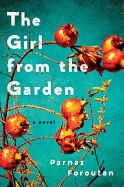
| Publisher: | Ecco | |
| Genre: | Political, Fiction, Cultural Heritage | |
| ISBN: | 9780062388384 | |
| Pub Date: | August 2015 | |
| Price: | $26.99 |
| Fiction |
by Parnaz Foroutan
Parnaz Foroutan's first novel peeks behind the closed doors of an Iranian Jewish family and at the hardships and sacrifices they face.
In early 20th-century Iran, teenaged bride Rakhel faces one of the most serious dilemmas that can befall a wife in a strict patriarchal society: she has not conceived a son. Her wealthy and respected husband, Asher Malacouti, wants nothing so much as a son to inherit his legacy, and the fact that his younger brother's wife, Khorsheed, has already borne one son creates more tension in the household and pressure on Rakhel. When Asher's cousin divorces his beautiful wife, Kokab, Asher sees a golden opportunity. If he marries Kokab, he does her the favor of saving her reputation, while she will provide him with sons. However, his motives are less practical and charitable than he pretends. In truth, Asher is hopelessly smitten with his cousin's wife and desperate to possess her. Despite her mother-in-law Zolekhah's counsel that Rakhel should do her duty as first wife by taking over household operations and welcoming Kokab, Rakhel feels nothing but heartache and jealousy toward the newcomer.
As the family stumbles fruitlessly toward disaster, Foroutan intersperses scenes of an elderly woman named Mahboubeh, the family's last living descendant, now tending her pomegranate trees in Los Angeles and thinking about her family's checkered past. Despite their suffering, Foroutan's characters experience moments of beauty, too. Filled with lingering sorrow, broken hearts and cold revenge, this walk down a sometimes-darkened memory lane is not for those seeking a light-hearted read, but fans of well-paced dramas will find much to adore. --Jaclyn Fulwood, blogger at Infinite Reads
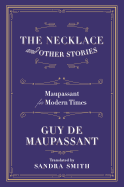
| Publisher: | Liveright | |
| Genre: | Fiction, Classics, Short Stories (single author) | |
| ISBN: | 9780871403681 | |
| Pub Date: | August 2015 | |
| Price: | $29.95 |
| Fiction |
by Guy de Maupassant, trans. by Sandra Smith
Guy de Maupassant is a staple of AP French literature courses and gothic horror collections, someone more revered than widely read and discussed. Sandra Smith aims to change that with The Necklace and Other Stories, her set of translations of Maupassant's most famous stories, updating his late 19th-century French into something close to 21st-century vernacular. For fans of Maupassant, Smith provides an easy, engaging read to replace older, outdated translations, and newcomers to his work will quickly understand why he was so successful during his lifetime.
The Necklace and Other Stories is separated into three sections, each dealing with a particular theme of Maupassant's work: French Life, Tales of War and Tales of the Supernatural. By bunching stories by subject matter, Smith aims to show the breadth of his interests. Maupassant was equally as gifted at depicting the hard-luck life of the French middle class as he was telling stories about ghosts, insanity and horror. Still, it's hard not to feel the story order was a bit of a mistake, given that the thrilling supernatural ones come last, muddling the pace of the collection as a whole.
Maupassant's stories often end on what could be considered punchlines, as if the story were a long joke ("The Necklace," in particular, feels like an extended gag). Readers of modern short stories might find such structures archaic, but it feels like a breath of fresh air when placed alongside collections by some current authors. --Noah Cruickshank, marketing manager, Open Books, Chicago, Ill.
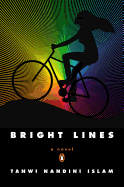
| Publisher: | Penguin Books | |
| Genre: | Fiction, Asian American, Contemporary Women, Family Life | |
| ISBN: | 9780143123132 | |
| Pub Date: | August 2015 | |
| Price: | $16 |
| Fiction |
by Tanwi Nandini Islam
Anwar Saleem, the focus of Tanwi Nandini Islam's Bright Lines, is as settled into Brooklyn, N.Y., as anyone could be. He runs his apothecary while his wife, Hashi, owns a beauty salon. They live in a renovated brownstone between Fort Greene and Bedford-Stuyvesant, in an area "now being called Clinton Hill." And their two daughters--one a flirtatious teenager and the other a college student who inherited Anwar's passion for plants--fill their home with youthful energy. This sense of blooming life seems to spill out into the streets, where "children ran through an unleashed fire hydrant, hopscotch chalk erased in the wasteful gush of water." It's a colorful, vibrant world that Bright Lines invites readers to step into and enjoy.
Despite his strong new roots, Anwar is haunted by the memories of living through the atrocities of the 1971 war in Bangladesh. Having lost his brother-in-law (also his closest friend) in the violence, Anwar adopted the man's daughter. Ella, now in her first year of college, has come to resemble her biological father more than ever. As Anwar watches Ella and his youngest daughter, Charu, grow into adults, both consumed with the standard anxieties of young people in the United States, Anwar finds himself wishing he could communicate to them everything he's been through. He knows there's a gaping distance between his memories and their reality--the question is how to cross it, and whether he should even try. --Annie Atherton
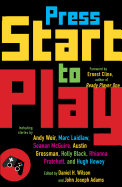
| Publisher: | Vintage | |
| Genre: | General, Science Fiction, Fiction, Anthologies (multiple authors) | |
| ISBN: | 9781101873304 | |
| Pub Date: | August 2015 | |
| Price: | $15.95 |
| Starred | Science Fiction & Fantasy |
by Daniel H. Wilson and John Joseph Adams, editors
Edited by Daniel Wilson, roboticist and author of Amped, and John Joseph Adams, series editor of Best American Science Fiction & Fantasy, Press Start to Play is a thrilling, engaging collection of brilliant and thoughtful short fiction about playing, designing and living within video games. Only the amazing roster of contributors matches the anthology's thematic breadth.
Game designer Rhianna Pratchett's "Creation Screen" presents a main character in a role-playing game who wonders why she must endure pain, fighting and danger in thrall to an unseen player. Hugh Howey (Wool) offers a marvelous short story about a stay-at-home mom's distinctive way of playing a military shooter video game. NFL punter and inveterate gamer Chris Kluwe explores the commonality between achievement in football and video games.
Ken Liu (Grace of Kings) weaves a multi-level story about a prince captured by a space bounty hunter hired by the king. And io9 editor Charlie Jane Anders skillfully writes about social disability and savant-level video game accomplishment in "Rat Catcher's Yellows"; her lens focuses on circumstances surrounding a lesbian whose loving partner has disappeared into a video game that simulates a kingdom of cats.
There are so many shimmering standouts in this collection that readers will be hard-pressed to choose a favorite. Short stories must do the same world-building heavy lifting as novels, in far less space, and each one within Press Start to Play does so capably, making every piece worth reading. --Rob LeFebvre, freelance writer and editor
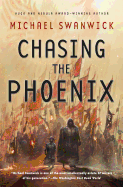
| Publisher: | Tor | |
| Genre: | General, Fiction, Science Fiction, Action & Adventure, Apocalyptic & Post-Apocalyptic | |
| ISBN: | 9780765380906 | |
| Pub Date: | August 2015 | |
| Price: | $26.99 |
| Science Fiction & Fantasy |
by Michael Swanwick
In Chasing the Phoenix, Michael Swanwick has written a sweeping fantasy epic set in a future, fractured China. Swanwick's protagonists from Dancing with Bears--dashingly clever con artist Darger and Surplus, the genetically modified dog warrior with human intelligence--scheme their way to fortune while in servitude to the Hidden King, self-declared ruler of China, as he battles the country's disparate factions, seizes their riches and unifies them under one flag.
Surplus has arrived in the city of Brocade with the corpse of his best friend, Aubrey Darger, on a yak; he's in search of the Infallible Physician to revive his friend, and discovers that the physician is a woman hiding behind the "expertise" of her senile father. Darger's resurrection cements the woman's reputation as the true Infallible Physician, earns him a reputation as a sage (which Darger himself promotes), and prompts the Hidden King to capture the duo, forcing them to aid in his conquest of China. The King's advisers, however, become suspicious of the increasing influence Darger exercises as the pair manipulate and curry favor with the ruler, and they attempt to blackmail him and Surplus through seduction, exposure and threat of death. Hidden agendas among the four soon transform into a dangerous game of cat and mouse. To complicate matters, Darger and Surplus must also evade outside forces threatening to unravel their plans.
Swanwick deftly weaves myth and historical fact together to create an intriguing dystopic mystery whose resolution will elude readers until its final pages. His vision of China hinges on the fantastical, but it's a believable resemblance that gives the narrative a foreboding power. --Nancy Powell, freelance writer and technical consultant
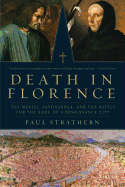
| Publisher: | Pegasus Books | |
| Genre: | History, Religion, Renaissance, Christian Church, Europe, Italy | |
| ISBN: | 9781605988269 | |
| Pub Date: | August 2015 | |
| Price: | $29.95 |
| History |
by Paul Strathern
In the late 15th century, the Dominican friar Girolamo Savonarola led a frenzied and occasionally violent campaign to return the city of Florence--and the Roman Catholic Church as a whole--to the principles of early Christianity. For three years, the self-proclaimed prophet ruled as the city's moral dictator. His career reached its highpoint in 1497 with the Bonfire of the Vanities: the public burning of playing cards, masks, mirrors, "indecent" books and pictures, and other items the puritanical monk deemed morally questionable.
Savonarola's brief reign is often treated as an interlude of religious fanaticism within the enlightened secularism of the Renaissance. In Death in Florence: The Medici, Savonarola, and the Battle for the Soul of a Renaissance City, Paul Strathern (The Artist, The Philosopher and the Warrior) paints a more complicated picture, placing Savonarola within a broader context. He considers Medici political aspirations and financial machinations, papal corruption, the shifting political allegiances of Renaissance Italy, medieval scholasticism, Renaissance humanism and the physiology of prophetic visions.
Perhaps most interesting is Strathern's depiction of the relationship between Savonarola and Lorenzo de Medici, a complex tangle of admiration on the part of the prince for the monk's scholarship and piety, patronage, power struggles for control of the Dominican order and secret deathbed negotiations. Death in Florence is ultimately an account of two competing visions of Florentine glory--one political and one religious, both of which would help shape Europe in the coming century. --Pamela Toler, blogging at History in the Margins
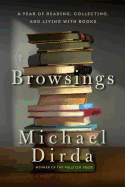
| Publisher: | Pegasus Books | |
| Genre: | Literary Criticism, Books & Reading | |
| ISBN: | 9781605988443 | |
| Pub Date: | August 2015 | |
| Price: | $24.95 |
| Essays & Criticism |
by Michael Dirda
In February 2012, longtime Washington Post book critic Michael Dirda (Classics for Pleasure) replaced the legendary William Zinsser as weekly columnist for the American Scholar website. The 52 pieces collected in Browsings, which are the product of that assignment, shine with Dirda's passion for books, both as a reader and a collector, and are certain to delight any bibliophile.
In the self-deprecating tone that is his default style, Dirda characterizes these brief essays as the "meandering reflections of a literary sybarite." More accurately, they reveal the mind of a critic with an astonishing breadth of literary knowledge and a talent for sharing that learning in accessible, often humorous, prose. There are pieces on the differences between anthologies ("dating") and collections ("serial monogamy"), the lifelong allure of the books we read in childhood, writing implements and writer's block. He describes the books by his bedside, one of many lists that in total run into the hundreds of titles.
Several of the essays describe Dirda's frequent forays into the world of book buying. One of the most entertaining recounts a Saturday excursion from his home to escape the ordeal of a weeklong midsummer power outage. After tallying his purchases, his admission that "my wallet was certainly lighter than when I arrived, but then so was my heart," is a sentiment that will be familiar to any book lover.
"We read for aesthetic, emotional and intellectual excitement," Dirda writes, and he insists that "reading should be a pleasure." Anyone with even a modest affinity for books is sure to close this one with a renewed enthusiasm for finding the next absorbing title. --Harvey Freedenberg, attorney and freelance reviewer
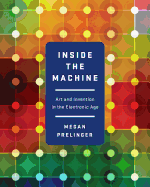
| Publisher: | W.W. Norton | |
| Genre: | General, History, Technology & Engineering, Electronics | |
| ISBN: | 9780393083590 | |
| Pub Date: | August 2015 | |
| Price: | $35 |
| Science |
by Megan Prelinger
With Inside the Machine, cultural historian and archivist Megan Prelinger (Another Science Fiction) tells the story of advancements in electronics, from radio broadcasting and vacuum tubes to space travel and bionics. She focuses on what the art used to advertise these wondrous and emerging technologies reveals about the culture of the era, and offers a fascinating visual history of the early 20th century's transformative electronic inventions.
Early creators of electronics faced a problem: how to explain new technologies to people who had no previous reference point for them. Prelinger notes that, unlike today's incremental advancements, what emerged during the early to mid-century resembled nothing that came before it. These innovations dramatically changed how people understood and related to the world. The light bulb not only enabled people to see in the dark more clearly than ever before, but also redefined the very idea of daytime. Therefore, visual representations of inventions had to show not only the object itself but what society could expect from the new technology.
Creators and artists alike celebrated and concentrated not just on the object and the end result but how it worked--on individual components. They wanted the public to see vacuum tubes and transistors that made the latest television, telephone and computer work. And when showing the final product was not enough, the artists began to create what Prelinger calls "science fiction" art, with futuristic visions of space travel and bionics.
In today's world, where people get excited about the latest smartphone but don't care how it works, Prelinger's book is both insightful and entertaining. --Justus Joseph, bookseller at Elliott Bay Book Company, Seattle, Wash.
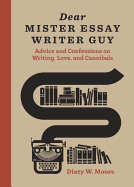
| Publisher: | Ten Speed Press | |
| Genre: | General, Humor, Form, Language Arts & Disciplines, Essays, Writing Skills, Reference, Composition & Creative Writing, Rhetoric | |
| ISBN: | 9781607748090 | |
| Pub Date: | August 2015 | |
| Price: | $14.99 |
| Starred | Reference & Writing |
by Dinty W. Moore
Dinty W. Moore (Between Panic and Desire), the editor of Brevity, solicited respected contemporary essayists for questions regarding the form, so he could answer them in Dear Mister Essay Writer Guy: Advice and Confessions on Writing, Love, and Cannibals. An essay riffing on the question at hand accompanies each q&a. The resulting collection of self-deprecating humor includes bits of writing advice as a bonus.
Cheryl Strayed has concerns about her predilection for the em dash: Moore assures her that "em dashes can replace commas, semicolons, colons, the large intestine, and parentheses." Brenda Miller worries that Facebook "is like one big communal personal essay"; Moore answers with a selection of his status updates over a period of months, which are as sage and instructive as they are hilarious. Roxane Gay wonders about the value of writers writing about writing. Other seekers of wisdom include Judith Kitchen, Phillip Lopate, Brian Doyle and Lee Gutkind. Moore makes room to share a "found essay" left on his voicemail by Mike the Tree Guy, and to list the side effects of memoir, including "nausea, sleep problems, constipation, gas, and swelling of the navel."
Moore is rarely serious and keeps his tongue in his cheek throughout, but the result is enlightening as well as entertaining. With fewer than 200 pages, Dear Mister Essay Writer Guy is a quick and enjoyable read, to be taken in pieces as small as the reader prefers. Its witty, modest tone belies the artistry of the essays contained, which are exemplars of the short form. --Julia Jenkins, librarian and blogger at pagesofjulia
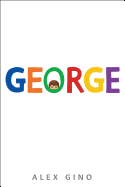
| Publisher: | Scholastic | |
| Genre: | Friendship, Social Issues, Juvenile Fiction, Bullying, LGBT | |
| ISBN: | 9780545812542 | |
| Pub Date: | August 2015 | |
| Price: | $16.99 |
| Starred | Children's & Young Adult |
by Alex Gino
Alex Gino, in a timely and deeply thoughtful debut novel, explores what life is like for 10-year-old George. The gender George was assigned at birth doesn't reflect who she knows herself to be: "Melissa was the name she called herself in the mirror when no one was watching."
For George, it feels that there's an impenetrable divide between how she sees herself and how the world views her. Gino makes this distinction easy for young readers to follow: when George is perceived by others, they refer to George as "he." When referring to herself, George always uses "she."
George sees the perfect opportunity to bring Melissa out into the world when Ms. Udell announces auditions for a class play based on Charlotte's Web. But even Ms. Udell (who's "always going on about how we're not supposed to let people's expectations limit our choices," as George's best friend, Kelly, puts it) can't seem to broaden her perspective enough to allow George to play Charlotte.
Gino beautifully chronicles George's journey to be seen as Melissa, especially her breakthroughs and moments of honesty, such as when she finally reveals her secret to Kelly. George's struggle is portrayed realistically, with examples of how far most people need to evolve in order to be ready for her. For children who have felt like outsiders, Gino has given them a brave companion to share their path. And for children who identify with George, they may be recognizing themselves for the first time in children's literature. --Jennifer M. Brown, former children's editor, Shelf Awareness
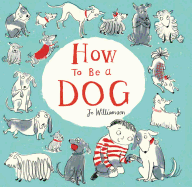
| Publisher: | Little Bee/Bonnier | |
| Genre: | Animals, General, Dogs, Family, Juvenile Fiction, Humorous Stories | |
| ISBN: | 9781499801521 | |
| Pub Date: | August 2015 | |
| Price: | $16.99 |
| Children's & Young Adult |
by Jo Williamson
Thanks to Jo Williamson's debut picture book, How to Be a Dog, originally published in England, canines finally have the valuable information they need to "have some fun and be happy" when moving in with a new human family.
"Remember to always say hello to your human in a friendly way," the narrator dog advises his canine comrades. Sounds reasonable enough, but the illustration shows a wide-eyed girl, flat on her back next to a spilled basket of groceries, her face being licked by a crazed, tail-wagging pooch. "And welcome any visitors..." adds the narrator, as a dog noses up the skirt of a shocked, bespectacled woman. On every page, the illustration is a playful punchline to the understated text. "When playing ball, run straight back and drop it at your human's feet." Here, a dog catches the ball and loop-de-loops in a dotted line everywhere but back to the girl... in fact, he runs right past her. In the end, the narrator dog is happily stretched out underneath the table with his human best friend. Williamson's charming pencil sketches capture a range of dog expressions with the simplest of lines, and red and turquoise accents add to the whimsy. The front endpapers are populated by a host of comical dogs of various breeds and in many moods, from haughty to curious to overexcited. In the back endpapers, the dog and his human friend are mostly sleeping... a fitting end to any bedtime story.
There's nary an age group who wouldn't find something to wag a tail about in this irresistible homage to humankind's best friend. --Karin Snelson, children's editor, Shelf Awareness
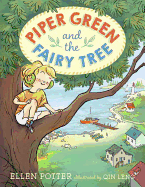
| Publisher: | Knopf | |
| Genre: | General, School & Education, Social Issues, Family, Juvenile Fiction, Siblings | |
| ISBN: | 9780553499230; $5.99 paperback, 9780553499261 | |
| Pub Date: | August 2015 | |
| Price: | $14.99 |
| Children's & Young Adult |
by Ellen Potter, illust. by Qin Leng
Maine's Peek-a-Boo Island, where all the kids ride a lobster boat to school, is the enchanting setting for Piper Green and the Fairy Tree, a warm, witty chapter-book series debut by Ellen Potter (Olivia Kidney series, The Kneebone Boy).
Piper Green insists on wearing her absent older brother Erik's monkey-face earmuffs for the first day of second grade. "Who's going to want to be friends with a kid who wears monkey earmuffs all the time?" asks her younger brother, Leo. "People who love monkeys," Piper retorts. "Which is everyone." So, it's with her parents' reluctant okay and earmuffs stubbornly on that Piper takes the Maddie Rose, a lobster boat, to the 50-kid school on Mink Island. (At the wharf, Mr. Grindle asks, "How's the wife and kids, Leo?" because Leo tells everyone he's married to a piece of paper named Michelle and that their children are three yellow Post-it notes he stuck on Michelle.) Though Piper is a truly hilarious first-person narrator, the story is not all hilarity: Piper's older brother Erik moved out to attend high school on the mainland, and she misses him fiercely. It's not until she encounters the magic of the mysteriously mewing Fairy Tree that she changes her mind and abandons the monkey-face earmuffs once and for all. When Piper goes back to school, her teacher says it's "nice to see your ears," and Piper responds, "Nice to see yours too."
Qin Leng's cheerful, expressive black-and-white pen-and-ink illustrations (and a map!) add even more merriment to this story of community, caring and kittens. --Karin Snelson, children's editor, Shelf Awareness